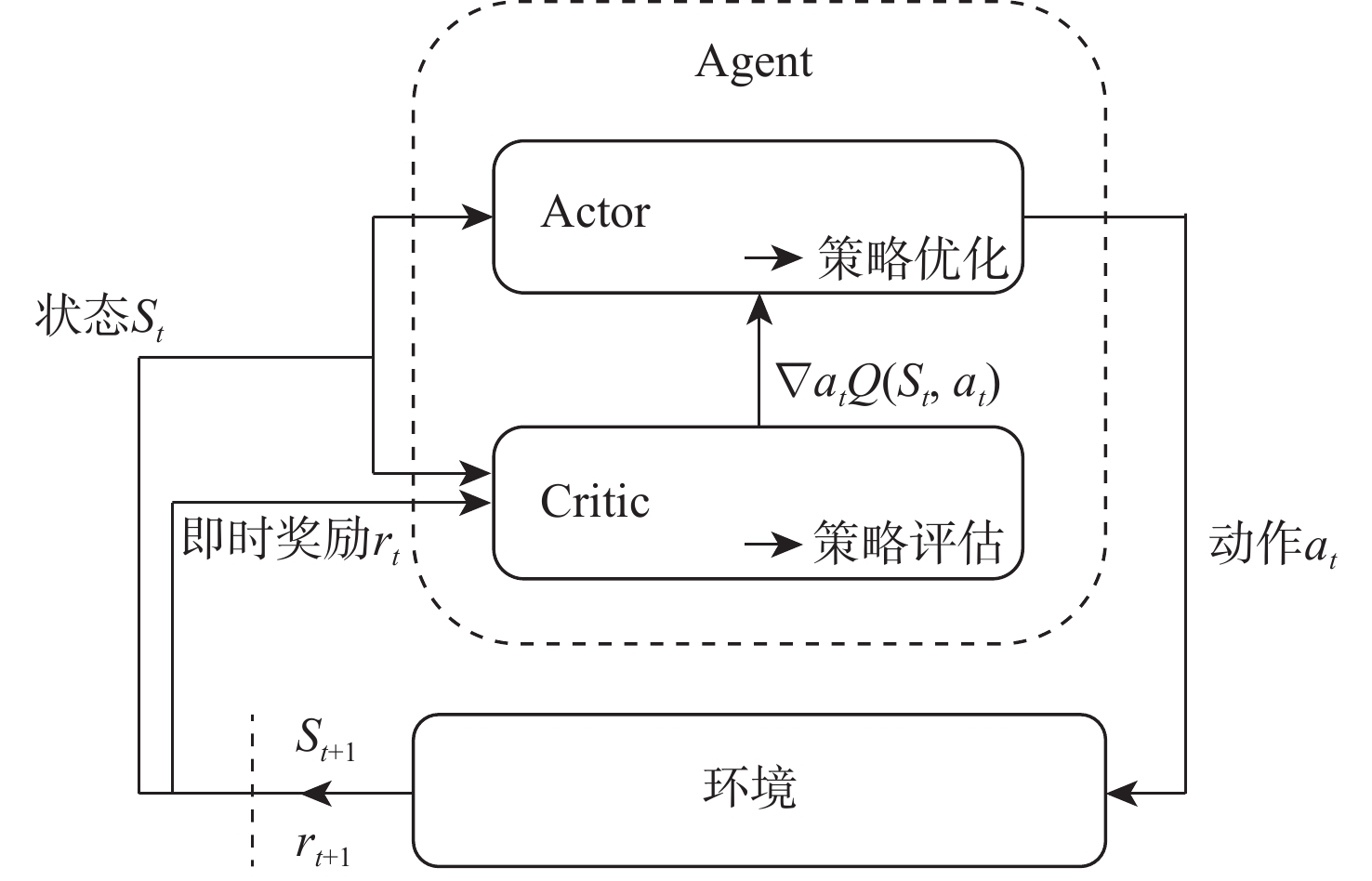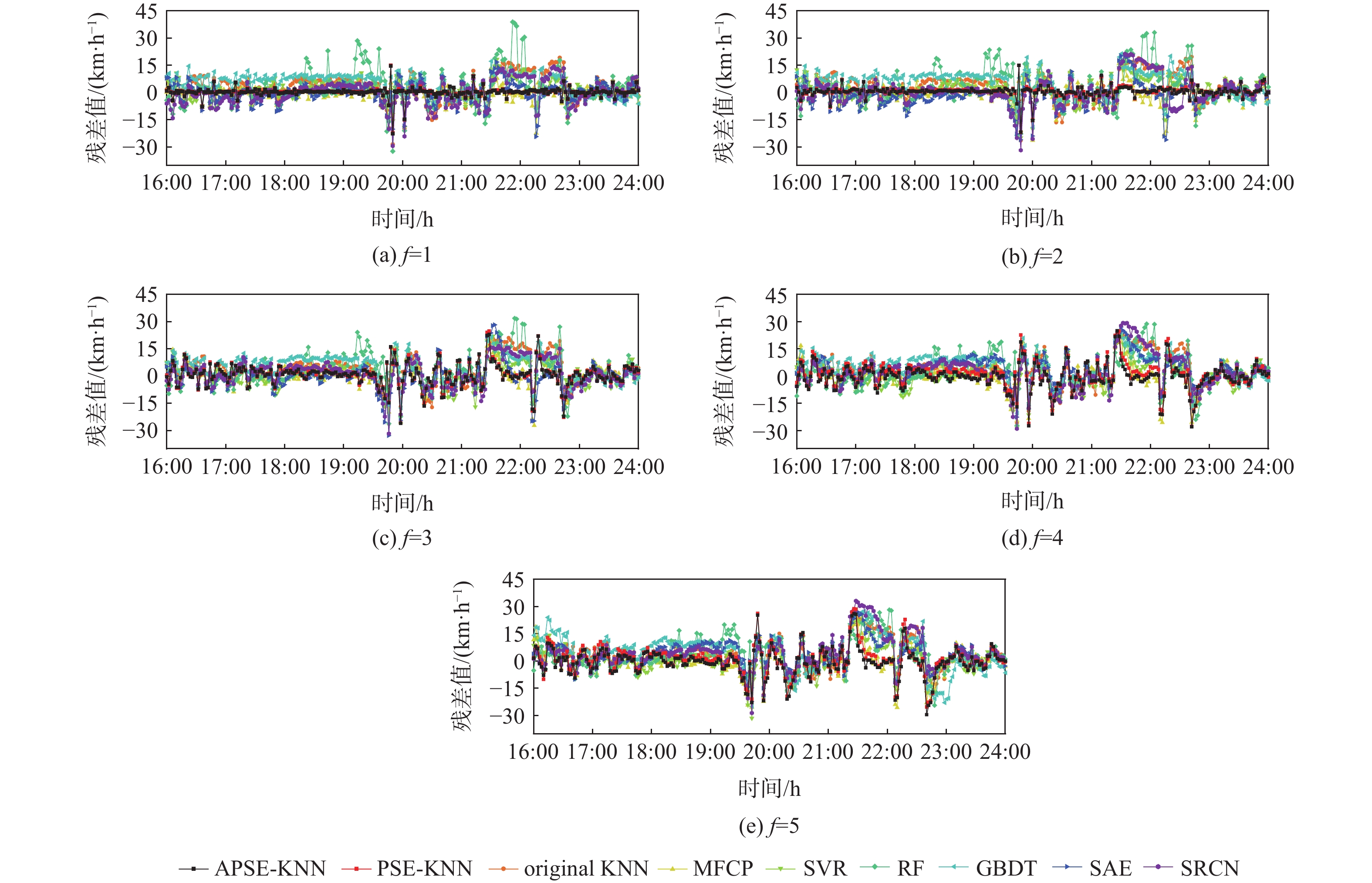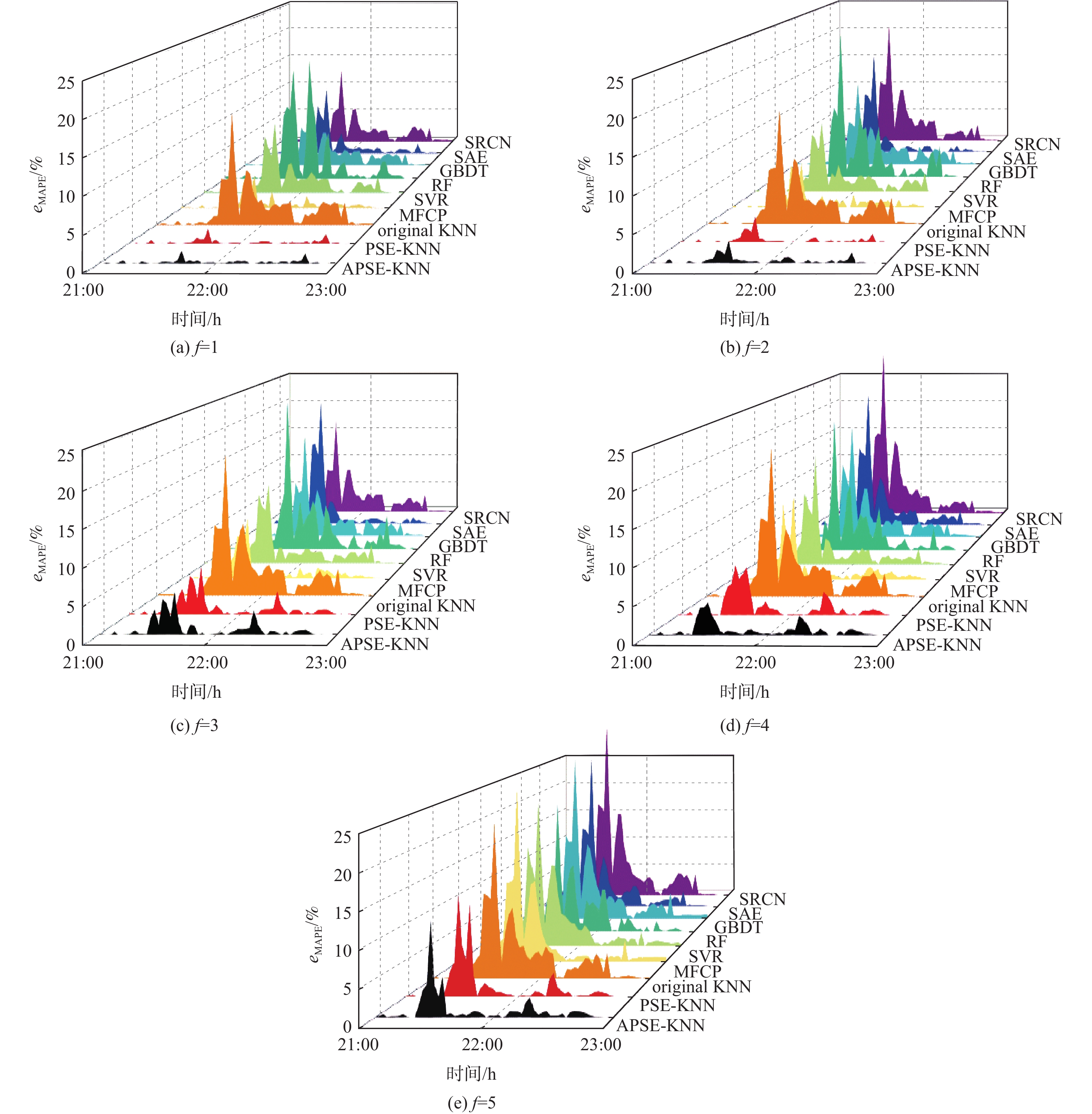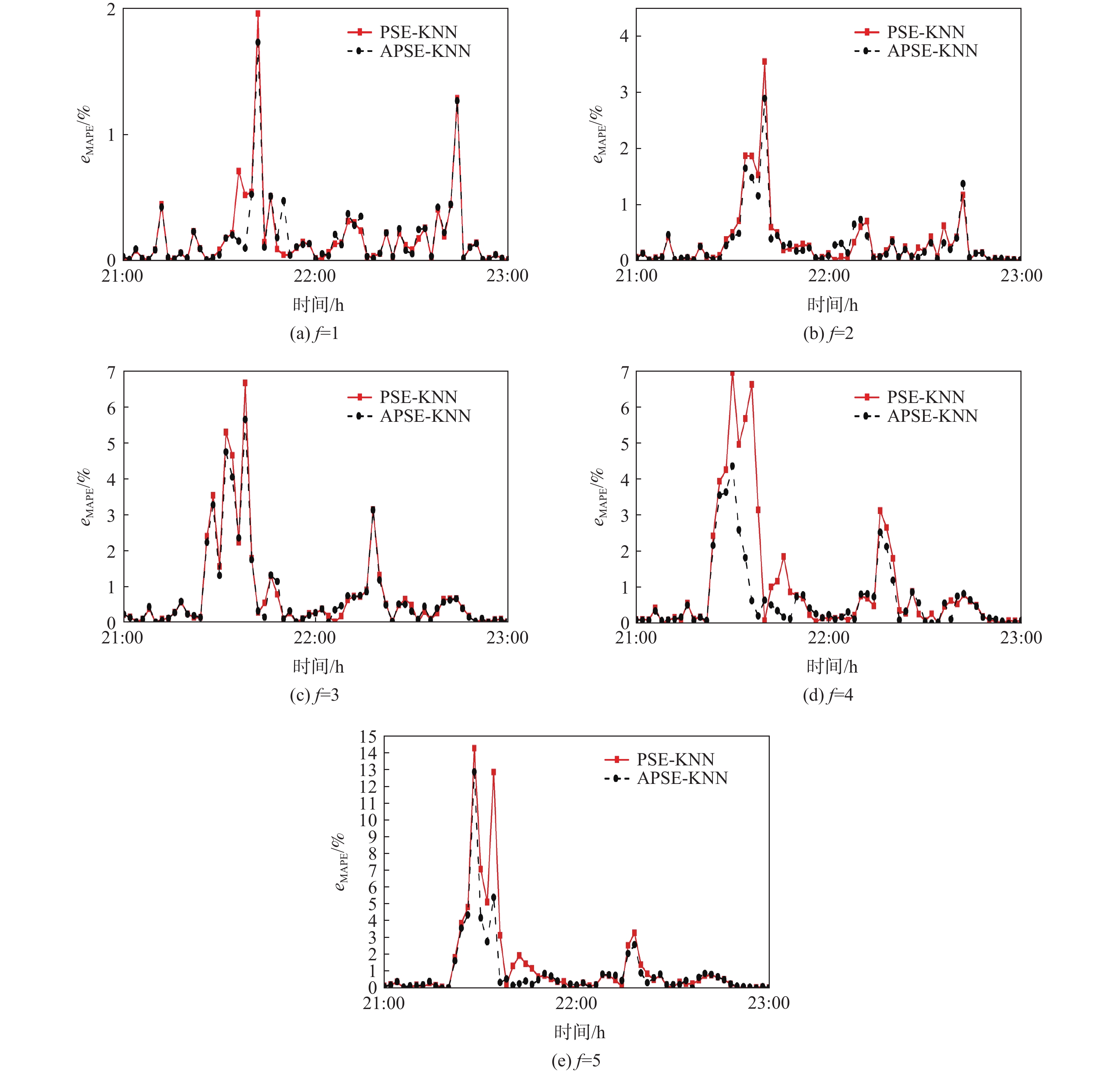-
摘要:
精准的短时交通状态预测是实施有效的交通管理与控制的重要依据。而可预知性特殊事件(PSEs)短时间内在其举办地点周边产生异常的交通出行需求,又因为事件发生数量少、数据样本收集困难等不利因素,往往造成预测精度难以保证。为此,通过实测数据分析了PSEs下短时交通演化特性,在此基础上,采用改进的K近邻(KNN)算法框架,提出一种短时交通状态的KNN(PSE-KNN)预测模型,并通过基于深度强化学习的实时超参数优化方法将其构建成自适应PSE-KNN(APSE-KNN)模型,最后以北京市演唱会场景为例对所提模型的效果进行了验证。结果表明:所提模型在多步预测实验中,相对于其他7种对比预测模型,平均减少残差值12.43%、降低绝对值百分比误差29.90%。证明所提模型有优异的快速调整能力,其更适应于PSEs场景下短时交通状态预测任务。
Abstract:Accurate short-term traffic state prediction is an important basis for effective traffic management and control. The planned special events (PSEs) generate abnormal traffic demand around the venue in a short time. However, due to the limited number of the special events and the difficulty in data sample collection, the prediction accuracy is hard to guarantee.Therefore, the short-term traffic evolution characteristics under PSEs are analyzed by measured data. On this basis, a short-term traffic state prediction model is established by using the framework of improved K-nearest neighbor (KNN) algorithm. Therefore, the evolution characteristics of short-term traffic under PSEs are analyzed through real event data, and a short-term traffic state KNN (PSE-KNN) prediction model was proposed. Moreover, through real-time super parameter optimization method based on Deep reinforcement learning, we constructed into an adaptive PSE-KNN (APSE-KNN) model. Finally, the effect of the model is verified by taking the concert scene in Beijing as an example. The results show that in the multi-step prediction experiment, compared with the other seven comparative prediction models, the proposed prediction model reduces the mean residual error by 12.43 % and the mean absolute percentage error by 29.90 % on average. These results prove that this model has excellent rapid adjustment ability and is more suitable for short-term traffic state prediction task under PSEs.
-
表 1 PSE-KNN模型在多步预测任务中标定的最优参数
Table 1. Optimal parameters calibrated by PSE-KNN model in multi-step prediction task
f K α 1 97 0.9 2 57 0.9 3 57 0.8 4 54 0.8 5 54 0.7 -
[1] CORBIN J. Strategies to improve management of travel for all planned special events in a region[C]//82nd Annual Meeting of the Transportation Research Board. Washington, D. C. : Federal Highway Administration, 2003. [2] 王鹏. 典型交通事件影响下交通流运行状态演变分析[D]. 长春: 吉林大学, 2017.WANG P. Analysis of traffic flow state evolution under the influence of typical traffic incident[D]. Changchun: Jilin University, 2017 (in Chinese). [3] 张海鹏, 杨宏业, 邬鑫珏, 等. 基于公交车GPS数据的短时交通流预测研究[J]. 内蒙古工业大学学报(自然科学版), 2018, 37(1): 75-80.ZHANG H P, YANG H Y, WU X J, et al. Research on short-term traffic flow forecasting based on GPS data of bus[J]. Journal of Inner Mongolia University of Technology (Natural Science Edition), 2018, 37(1): 75-80(in Chinese). [4] 傅成红, 杨书敏, 张阳. 改进支持向量回归机的短时交通流预测[J]. 交通运输系统工程与信息, 2019, 19(4): 130-134.FU C H, YANG S M, ZHANG Y. Promoted short-term traffic flow prediction model based on deep learning and support vector regression[J]. Journal of Transportation Systems Engineering and Information Technology, 2019, 19(4): 130-134(in Chinese). [5] 张文胜, 郝孜奇, 朱冀军, 等. 基于改进灰狼算法优化BP神经网络的短时交通流预测模型[J]. 交通运输系统工程与信息, 2020, 20(2): 196-203.ZHANG W S, HAO Z Q, ZHU J J, et al. BP neural network model for short-time traffic flow forecasting based on transformed grey wolf optimizer algorithm[J]. Journal of Transportation Systems Engineering and Information Technology, 2020, 20(2): 196-203(in Chinese). [6] GU Y L, LU W Q, QIN L Q, et al. Short-term prediction of lane-level traffic speeds: A fusion deep learning model[J]. Transportation Research Part C:Emerging Technologies, 2019, 106: 1-16. doi: 10.1016/j.trc.2019.07.003 [7] LI W, WANG J X, FAN R, et al. Short-term traffic state prediction from latent structures: Accuracy vs efficiency[J]. Transportation Research Part C:Emerging Technologies, 2020, 111: 72-90. doi: 10.1016/j.trc.2019.12.007 [8] CHIKARAISHI M, GARG P, VARGHESE V, et al. On the possibility of short-term traffic prediction during disaster with machine learning approaches: An exploratory analysis[J]. Transport Policy, 2020, 98: 91-104. doi: 10.1016/j.tranpol.2020.05.023 [9] NADI A L, SHARMA S, SNELDER M, et al. Short-term prediction of outbound truck traffic from the exchange of information in logistics hubs: A case study for the port of Rotterdam[J]. Transportation Research Part C:Emerging Technologies, 2021, 127: 103111. doi: 10.1016/j.trc.2021.103111 [10] LI J Y, GUO F C, SIVAKUMAR A, et al. Transferability improvement in short-term traffic prediction using stacked LSTM network[J]. Transportation Research Part C:Emerging Technologies, 2021, 124: 102977. doi: 10.1016/j.trc.2021.102977 [11] YU X J, SUN L J, YAN Y, et al. A short-term traffic flow prediction method based on spatial-temporal correlation using edge computing[J]. Computers & Electrical Engineering, 2021, 93: 107219. [12] 王兴川, 姚恩建, 刘莎莎. 基于AFC数据的大型活动期间城市轨道交通客流预测[J]. 北京交通大学学报, 2018, 42(1): 87-93.WANG X C, YAO E J, LIU S S. Urban rail transit passenger flow forecasting for large special event based on AFC data[J]. Journal of Beijing Jiaotong University, 2018, 42(1): 87-93(in Chinese). [13] 郑云霄. 大型活动下城市轨道交通进出站客流短时预测研究[D]. 北京: 北京交通大学, 2019.ZHENG Y X. Research on short-term prediction of entry and exit passenger flow of urban rail transit under large-scale activities[D]. Beijing: Beijing Jiaotong University, 2019 (in Chinese). [14] RAHMAN R, HASAN S. Short-term traffic speed prediction for freeways during hurricane evacuation: A deep learning approach[C]//2018 21st International Conference on Intelligent Transportation Systems. Piscataway: IEEE Press, 2018. [15] NI M, HE Q, GAO J. Using social media to predict traffic flow under special event conditions[C]//93rd Annual Meeting of Transportation Research Board. Washington, D. C. : Federal Highway Administration, 2014. [16] KWOCZEK S, DI MARTINO S, NEJDL W. Predicting and visualizing traffic congestion in the presence of planned special events[J]. Journal of Visual Languages & Computing, 2014, 25(6): 973-980. [17] POLSON N G, SOKOLOV V O. Deep learning for short-term traffic flow prediction[J]. Transportation Research Part C:Emerging Technologies, 2017, 79: 1-17. doi: 10.1016/j.trc.2017.02.024 [18] CAI P L, WANG Y P, LU G Q, et al. A spatiotemporal correlative k-nearest neighbor model for short-term traffic multistep forecasting[J]. Transportation Research Part C:Emerging Technologies, 2016, 62: 21-34. doi: 10.1016/j.trc.2015.11.002 [19] HABTEMICHAEL F G, CETIN M. Short-term traffic flow rate forecasting based on identifying similar traffic patterns[J]. Transportation Research Part C:Emerging Technologies, 2016, 66: 61-78. doi: 10.1016/j.trc.2015.08.017 [20] YANG S. On feature selection for traffic congestion prediction[J]. Transportation Research Part C:Emerging Technologies, 2013, 26: 160-169. doi: 10.1016/j.trc.2012.08.005 [21] LV Y S, DUAN Y J, KANG W W, et al. Traffic flow prediction with big data: A deep learning approach[J]. IEEE Transactions on Intelligent Transportation Systems, 2015, 16(2): 865-873. [22] YU H Y, WU Z H, WANG S Q, et al. Spatiotemporal recurrent convolutional networks for traffic prediction in transportation networks[J]. Sensors, 2017, 17(7): 1501. doi: 10.3390/s17071501 -







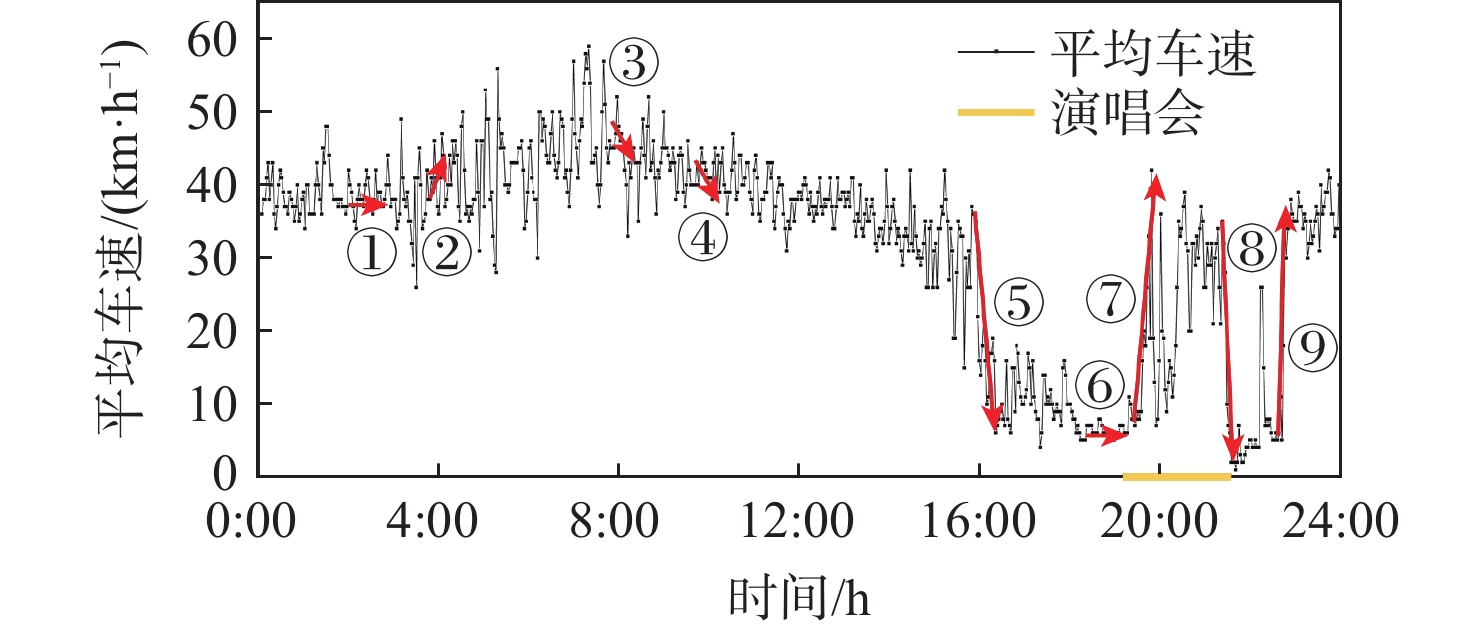
 下载:
下载:
